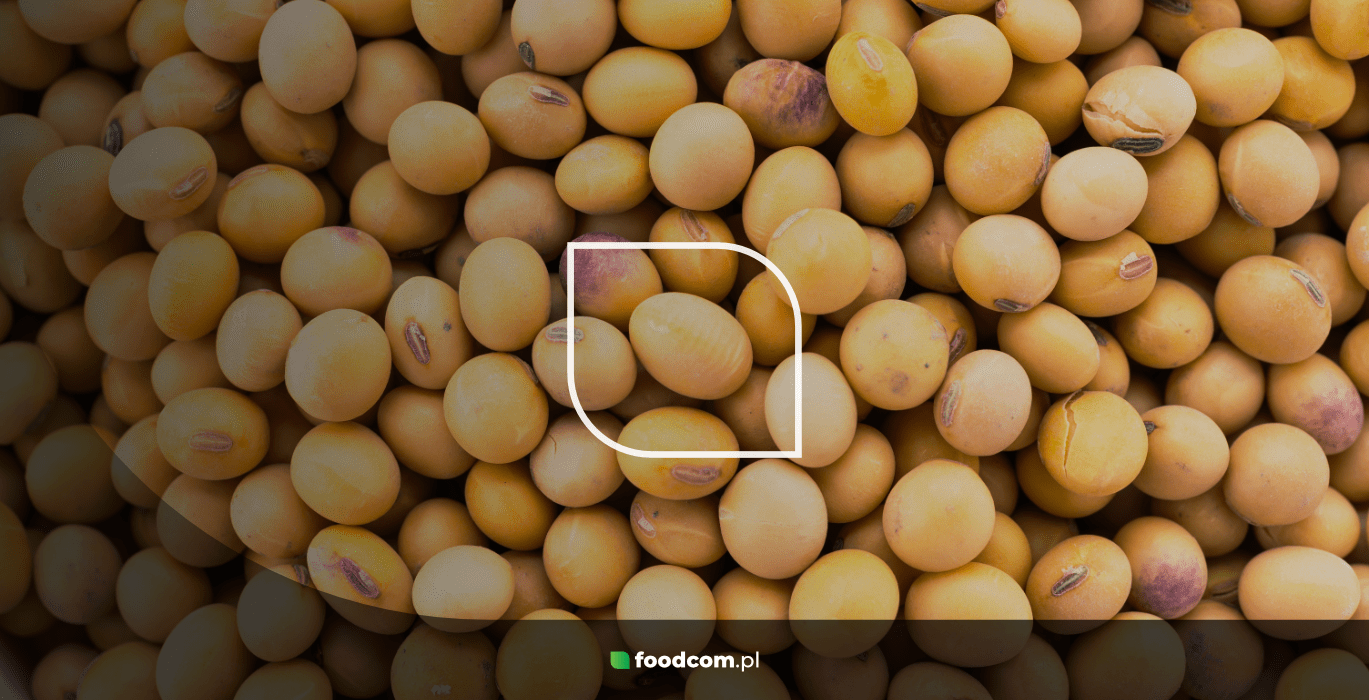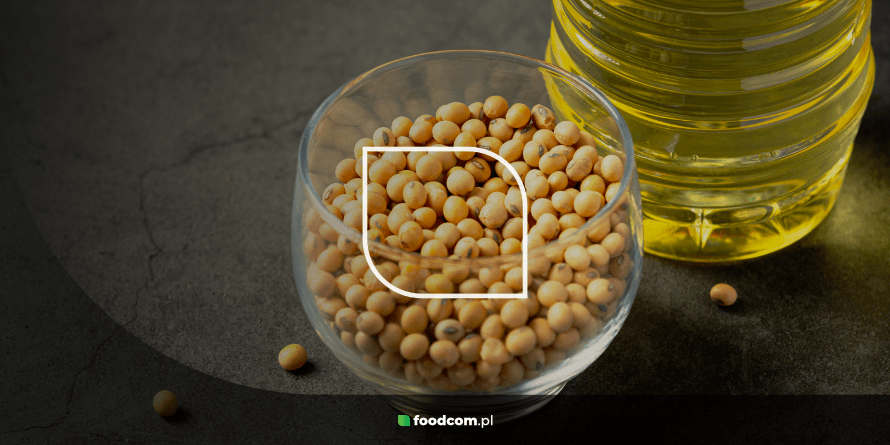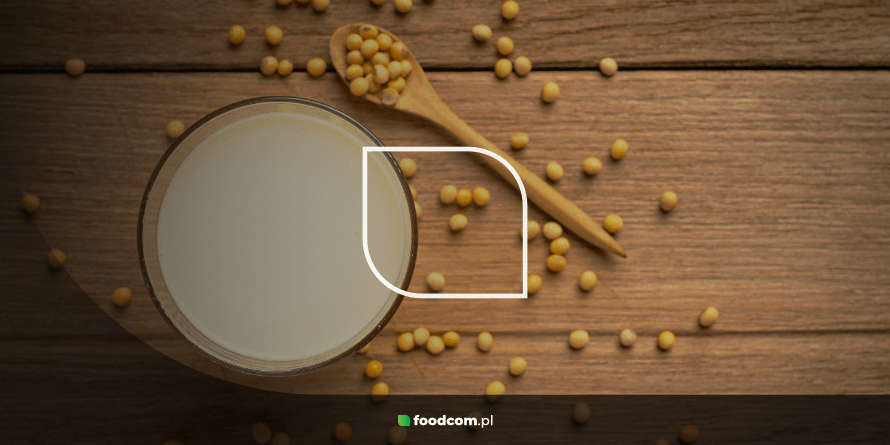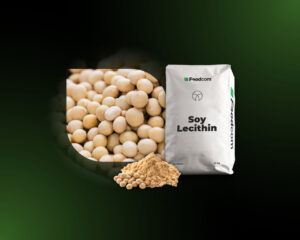- Soy is one of the key sources of plant protein in the food and feed industries, widely used in the form of concentrate, isolate, and flour.
- The global soybean market is growing rapidly, driven by the trend toward increasing demand for alternative proteins to animal proteins.
- Soy protein isolate and soy protein concentrate differ in purity and application, which influences the choice of raw material depending on the industry.
Soya is one of the world’s most important crops. Its versatile use, high protein content and favourable amino acid profile make it not only a base for many food products, but also an important raw material in the feed, cosmetic and pharmaceutical industries. Thanks to its versatility, soya has gained the status of a strategic raw material – both in the local and global economy.
Soya – characteristics and properties
Soya (Glycine max) is a legume native to Asia with a high protein (35-40%) and fat (17-20%) content. It is valued not only for its nutritional value, but also for its favourable amino acid profile, the presence of phytosterols, lecithin, isoflavones, fibre and unsaturated fatty acids (omega-3 and omega-6). These properties make soya antioxidant, cardiovascular and endocrine supportive.
The plant is relatively resistant to environmental conditions and easy to grow, making it an attractive raw material for agricultural producers. Depending on how it is processed, a variety of products with specific physico-chemical properties can be obtained from it – from protein concentrates to technical oils.
Applications of soya as a dietary ingredient
Soya protein has been present in the human diet for years. With the increased demand for plant-based protein sources today, it is gaining new importance. Soya preparations are used as:
- an ingredient in high-protein products (bars, nutritional supplements, diet products);
- an additive to functional foods (enrichment of bakery products, pasta, soups);
- a substitute for meat and milk (tofu, soya drinks);
- ingredient in dietary supplements – e.g. in protein blends for athletes;
- feed component in animal nutrition (especially soy protein concentrate).
In what form can soya be found?
In addition to the form of whole soya beans, the plant is now also found in other forms, such as soya flour, isolate or concentrate, which are all excellent ways of providing soya protein.
Soy flour
Soy flour is a form of processed soya often used as an additive in baked goods, pasta, cakes and also as a thickener and protein carrier in instant dishes. It contains about 50% protein, a lot of fibre and is a source of isoflavones.
Thanks to its high fat and lecithin content, soy flour is also used in industrial production as an emulsion ingredient and stabiliser. In the feed industry, it is a valuable component of high-protein diets for pigs and poultry.
Soy protein isolate vs. soy protein concentrate
The two most common raw materials from soya in industry are soya protein isolate and soya protein concentrate. They have different properties and uses:
- both contain a high amount of protein, which is, however, higher in the case of isolate (approximately 90%);
- due to its protein content of between 65-70%, soy protein concentrate may contain more fat or fibre;
- isolate has a higher solubility;
- concentrate, on the other hand, is more affordable.
Soy protein isolate is widely used in the food and supplement industry due to its high purity, neutral taste and functionality. Soy protein concentrate, on the other hand, is a more economical option for feed manufacturers and as a food additive.
Soy protein as a supplement for athletes
Athletes often wonder which protein to buy or what the difference is between creatine monohydrate and creatine malate. These are issues closely related to sports supplementation. Soy protein isolate is often used as a basic ingredient in protein supplements and as part of protein/creatine blends.
Also find out [which creatine to buy]!
As an alternative to whey, soy protein finds favour with lactose-intolerant people and vegans. The benefits of soy protein in supplementation include its features such as:
- a complete amino acid profile (although slightly poorer in methionine),
- good bioavailability and health profile,
- antioxidant properties (presence of isoflavones),
- thermal stability and easy formulation in drinks, bars and powders.
Not only supplements and the food market – industrial applications of soya
Although soya is mainly associated with food and supplements, its use goes much further. Due to its high oil content and the presence of functional proteins, soya is used in a variety of industries.
Chemical and technical industries
Soybean oil can be a raw material for biodiesel production, especially in the USA and South America. Due to its lubricating properties, it is also a base for the production of eco-friendly lubricants (greases and technical oils). Soy proteins are also used as an ingredient in biodegradable plastics and biopolymers.
cosmetic and pharmaceutical
Soy extracts have moisturising and anti-ageing effects, so they are used in creams and lotions. In addition, soy lecithin acts as a natural emulsifier in cosmetics and pharmaceuticals. Isoflavones from soya are also used in supplements for women during menopause – the natural phytoestrogens relieve unpleasant symptoms.
Feed and fertiliser production
Soybean meal and protein concentrates are a valuable source of protein for poultry, cattle and pig nutrition and are therefore often used as a feed additive – as an alternative to animal protein. By-products of soya processing (e.g. marc) also find their way into the production of organic plant fertilisers.
Soya market – data, trends and forecasts
The global soya market is growing rapidly. The crop and export leaders for soya are the United States, Brazil and Argentina. Europe imports large quantities of soya, and an increasing number of companies are relying on local cultivation and GMO-free products. The upward trend of the soya market is influenced by:
- increased demand for plant protein (the global plant protein market is estimated to be worth more than US$23 billion by 2027, with soy making up the largest segment);
- growth of the meat and milk alternatives sector (soy is a major component of many substitutes);
- innovations in soy processing – including highly bioavailable isolates and modern fermentation technologies;
- soya in dietary supplements – particularly in the context of sport and weight loss.
Soya is not only an ingredient in plant-based diets – it is one of the pillars of the modern food, feed and supplement industry. Soya isolate, concentrate and flour are used in a variety of sectors, responding to the needs of consumers and producers. With the growing demand for plant protein and the need to optimise costs in the feed industry, soya remains a raw material with high commercial potential.











